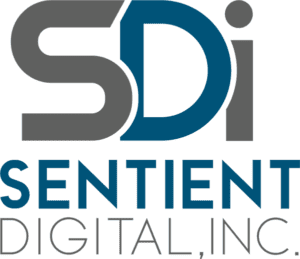Computer science and systems engineering internships have an important role in helping students build careers in STEM. These programs allow students to build skills and experience, while also. Sentient Digital, Inc., including its subsidiary, RDA, offer both systems engineering internships and computer science internships. This article explores how these types of internships can help students to get hands-on experience working in a STEM field. It will also explain how your organization can be a part of supporting the next generation of STEM employees, helping them to gain the kind of skills tech recruiters look for in their ideal candidates.
Why Students Need To Work Internships in STEM
The obvious reason that many students choose to work internships is for the work experience. Work experience means both the enhanced skills built on the job by performing assigned tasks, but also the section of a resume on which a student can list the internship, improving their chances when seeking a full-time, permanent job down the road. Internships may also provide useful networking opportunities, which will allow the intern to find both mentors and potential future employers.
Students in Science, Technology, Engineering, and Math (STEM) fields in particular need to bridge the gap between theory and practice by applying the principles they learn in school. While a solid grounding in the scientific method and the fundamentals of their fields are essential, there truly is no substitute for practical experience. Internships help prepare students for careers in the STEM field, and can also help them to narrow down their areas of interest and find where they can excel.
What Makes a Good Internship
To truly provide value to both the student and the organization, an internship should provide the opportunity to contribute to the work of the organization. Substantive work assignments will help the students build skills and will also mean that the time and money invested in them pays off for the organization. Employers need to plan deliberately for what tasks the intern will perform and put this information in the job posting, so that expectations are set on both sides.
Skills that STEM students need to develop include problem solving, communication, and the ability to work across departments or focus areas. Educational experiences such as internships work best when they facilitate the development of these skills. The organization can facilitate students’ building problem solving skills by offering challenging assignments and providing the kind of work environment where asking questions is not only permitted, but expected. Interns will develop their communication skills if their supervisors make them a part of the team and encourage them to make suggestions. The opportunity to work in different skill areas and with people from different departments can also allow interns to broaden their experience, which may also assist them as they work towards determining an area in which they want to specialize as they begin their careers.

Building Valuable STEM Skills in Internships Offered at RDA During Summer 2022
During the summer of 2022, Sentient Digital’s subsidiary, RDA, offered two internships. RDA focuses on Mission Software Solutions, particularly for acoustical engineering for military use. With the careful attention of supervising experts, this afforded the interns the opportunity to work with the kind of advanced technology that the U.S. Navy uses and to get to contribute to RDA’s important work.
RDA’s two summer interns, one focusing on systems engineering and one on computer science, were able to work on closely supervised projects that allowed them to gain exposure to the systems and work approaches that RDA uses on a daily basis. This makes the RDA internships good examples of how to structure this type of program that may help you to do so in your own organization.
Examples of Work Assignments for Systems Engineering Internships
As you think about putting together systems engineering internships in your own organization, it may be helpful to look at the types of work assignments that RDA’s systems engineering intern received.
A highlight of the internship involved the opportunity to disassemble a production U.S. Navy sonobuoy, in a controlled environment, with guidance and support from Senior Hardware and Systems Engineers. In this carefully monitored environment, with the supervision of these experienced engineers, the intern was able to gain a hands-on understanding of the inner workings of a piece of state of the art military technology.
For this project, RDA’s systems engineering intern disassembled a U.S. Navy Sonobuoy, then reassembled the unit into a test bed. This work involved deploying the buoy in a controlled manner in a lab. determining the functionality and interconnectedness of each subsystem, and finally restoring functionality using external power, grounding, and heat sinks. Testing and validation required working with an RF analyzer, software-defined sonobuoy receiver, and RDA’s Low-Cost Advanced Processor (LCAP), the company’s signature innovation.
“This was an excellent systems engineering internship project for our field.,” said Greg Niehaus, an engineer who was among the RDA employees supervising the intern.
In terms of achieving concrete results, the systems engineering intern’s project modified and restored a single use, battery operated buoy into a reusable test bed device. The internship required using a broad range of lab equipment including an RF signal analyzer, multimeter, scopes, software defined sonobuoy receiver, and integration with RDA’s LCAP software. The intern presented an overview of the numerous subsystems and communication links required in an air-deployed ocean sonobuoy.
Additionally, a second systems engineering project gave the intern the opportunity to work collaboratively, write software, and use measuring equipment. This portion of the systems engineering internship involved working on a research and development project with a small team. The intern wrote test software for a development kit and microcontroller to assist in project prototyping. The intern utilized an oscilloscope and radio frequency analyzer to determine the validity of microcontroller outputs. The intern was also able to assist with necessary RDA tasking.
“It’s always a big win when an internship can provide learning opportunities while also providing value,” Niehaus said. By participating in the R&D prototyping process by writing testing software and evaluating its validity, the intern made a meaningful contribution to RDA’s work and gained useful experience for the intern’s own career development.
Examples of Work Assignments for Computer Science Internships
Computer science is a very broad field and therefore there can be many valuable iterations of a beneficial computer science internship. RDA’s computer science internship can give you an idea of what this type of internship looks like for a government and military technology solutions contractor.
RDA’s computer science intern developed a library of calculation calls for the MSS business unit. This internship allowed collaboration with our software development team on a project that is deployed on U.S. Navy assets. Particularly for interns interested in building a career working with a Department of Defense contractor, this would make an excellent addition to a resume. Additionally, the internship provided an opportunity for immersion in the software development cycle, working with C/C++/Java programming languages, as well as different IDEs and configuration management software. The intern was able to develop and test their own solutions to concrete problems, which would improve both their competence and their confidence.
How to Create A Useful STEM Internship in Your Organization
By taking into account the examples above, you are one step closer to creating computer science or systems engineering internships in your own organization. The principles to keep in mind are that an internship should involve substantive work, should benefit both the intern and the organization, and should help interns to build useful skills for their future careers, while having the opportunity to explore an area (or, if possible, multiple areas) of interest. Another good practice is to bookend the internship with positive experiences, by setting expectations at the outset and concluding the internship with a way for the intern to demonstrate what they have learned. In our case, our interns gave presentations where they showed our team the results of their work. The process of creating their presentations also helped them to review what they had learned and the presentations themselves served as a record that our organization can refer to in the future. This is useful both in terms of the substance of the presentation and also to gain ideas for how to develop a plan for assignments to give to future interns.
Are You Looking for Computer Science or Systems Engineering Internships? Consider Applying for A Summer Internship at Sentient Digital.
If you are interested in working in systems engineering or computer science, particularly if you are a student of these fields, you will want to look for internships where you can do substantive work that matters. These internships will help you build career skills and contribute to the important work of the organization. Sentient Digital offers computer science and systems engineering internships through its subsidiary, RDA, during the summer. Keep checking in with our Current Job Postings page to see when we begin accepting applications for these internship positions.




